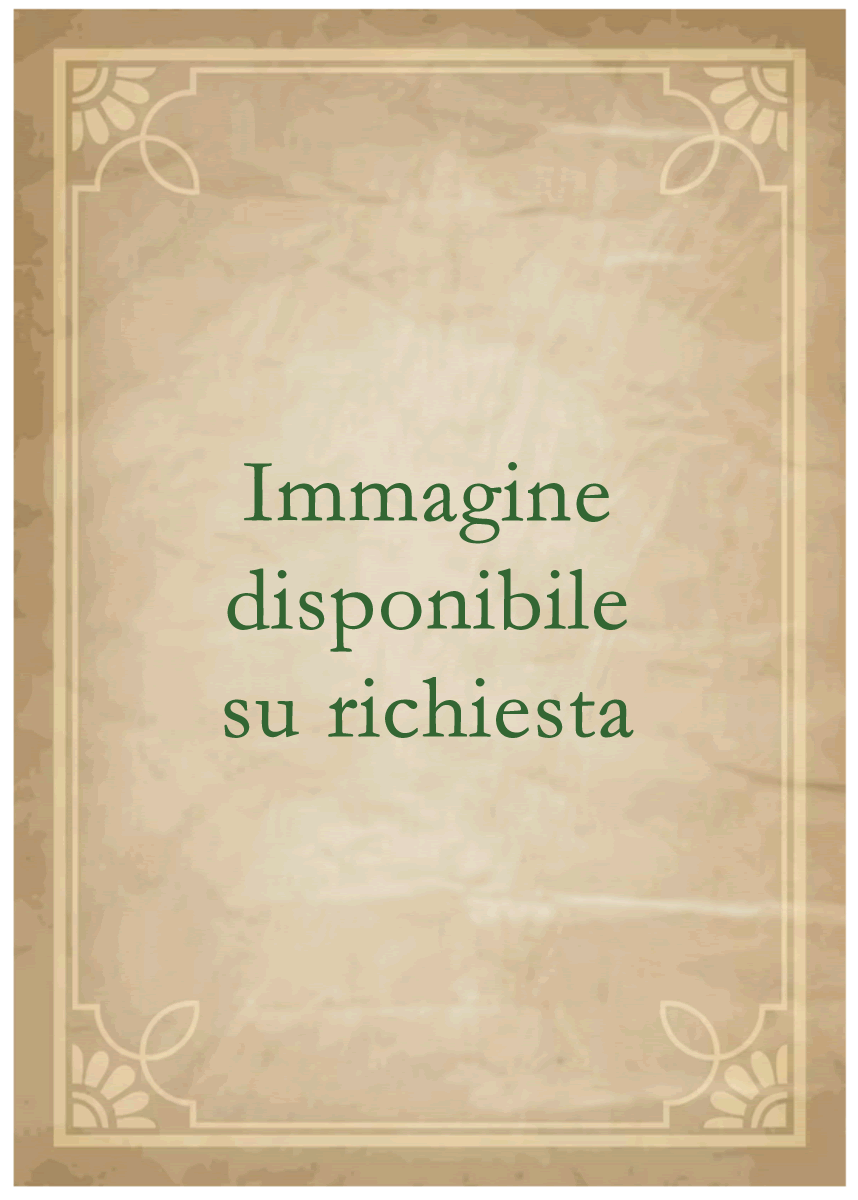THE BOTANICAL MAGAZINE; OR, FLOWER-GARDEN DISPLAYED. IN WHICH THE MOST ORNAMENTAL FOREIGN PLANTS, CULTIVATED IN THE OPEN GROUND, THE GREEN-HOUSE, AND THE STOVE, ARE ACCURATEL ...
To which will be added, their names, class, order, generic and specific characters, according to the celebrated Linnaeus; their places of growth, and times of flowering: together with the most approved methods of culture. A work intended for the use of such ladies, gentlemen, and gardeners, as wish to become scientifically acquainted with the plants they cultivate.
printed by Stephen Couchman, London, 1793-1814
In-8 p. (mm. 235x140), 40 voll. in 20 tomi, bella legatura coeva in p. vitellino, cornice dorata ai piatti, decoraz. e titolo oro su due tasselli al dorso, con complessive 1684 magnifiche tavole incise in rame e colorate a mano, di cui 63 ripieg. e 3 in bianco e nero, che raffigurano piante ornamentali e specie rare, ciascuna accompagnata da una o due pagine di testo descrittivo in cui sono elencate le proprietà delle piante, la storia e le caratteristiche di sviluppo. Tutte le tavole pubblicate nei primi volumi sono datate. Celebre rivista di giardinaggio illustrata, ideata da William Curtis nel 18° secolo e tuttora pubblicata (con variazioni nel titolo). È conosciuta anche come "The Botanical Magazine" o "Flower-Garden Displayed". Curtis began publication of "The Botanical Magazine" in February 1787. In the preface to Volume I he states: The present periodical publication owes its commencement to the repeated solicitations of several ladies and gentlemen.. who were frequently lamenting the want of a work, which might enable them, not only to acquire a systematic knowledge of the foreign plants growing in their gardens, but which might at the same time afford them the best information respecting their culture - in fact, a work, in which botany and gardening.. or the labour of Linnaeus and Miller, might happily be combined'. The "Magazine" was immediately successful, and the early volumes were quickly re-issued as is shown by their variously dated title-pages (during Curtis's lifetime 2000 copies of each number were sold).After William Curtis, who edited the first 13 volumes, the editors included John Sims (1800-1826), W.J. Hooker (1827-1865) and J. D. Hooker (1865-1904). Most of the early plates were from drawings by Sydenham Edwards and the colouring by William Graves. Other distinguished artists included J. Sowerby, J. Curtis, W. Jackson Hooker, W.H. Fitch, Matilda Smith, Lilian Snelling, and Stella Ross-Craig. Up to the end of volume 70 the plates were engraved on copper; thereafter lithography either from stone or zinc was employed, until colour printing was introduced in 1948. Until that date the plates were coloured by hand (Sotheby, Magnificent botanical books, 1987, n. 88)."Botanical Magazine" is the oldest current scientific periodical of its kind with coloured illustrations in the world.. in the beauty of production and high standard of its contributions it can claim a unique place (Synge P., Journal of the Royal Horticultural Society (1948),73, pp. 5-6). In 1984 it was incorporated into a new enlarged publication entitled "The Kew Magazine".William Curtis (Alton 1746-1799), a british botanist and entomologist. From an early age he developed a passion to study natural history. He moved to London to become apprenticed as an apothecary.. His life's work, "Flora Londinensis", was never a success. Being a lavish folio work which took many years to complete, it all but ruined him financially. Success came towards the end of his life when he started publishing his "Botanical Magazine"..Following Curtis's death in 1799, his brother Thomas Curtis took over the publication. However, it was his nephew, the biographer Samuel Curtis who really established the Magazine.. There were three stages in the production of a plate for the "Botanical Magazine". First an artist produced a drawing or painting of the plant, a plate would then be produced by an engraver, and finally each plate was hand coloured by a colourist. On each plate is written the name of the artist, then del', then the engraver's name followed by sculp'. One of the two main artists involved in the earlier "Botanical Magazine" was Sydenham Edwards, who was William Curtis's main artist. James Sowerby (1757-1822) was the other principal artist.. The main engraver for the "Botanical Magazine" was Francis Sansom. Although he was responsible for a few drawings for Curtis, he was the main engraver for the magazine. When the Magazine was published, it could be bought uncoloured, coloured or finished with extraordinary care. It is thought that the latter was done by colourist William Graves.. Plates were hand coloured until as late as the 1950s. A team of young women were employed, each with a single colour to apply. This was a monotonous activity, and nowadays with the advent of good quality printing, hand colouring is no longer necessary. Following "Flora Londinensis", the "Botanical Magazine" and less successful publications such as "Materia Medica" and Linnaeus' systems of botany, William Curtis had plans to produce a natural history of the British Isles. He made copious notes on many aspects of Britain's natural history, and commissioned artwork for it from Sydenham Edwards, but it was never produced (così Curtis Museum, Hampshire Cultural Trust online). Cfr. Stafleu & Cowan 1290 - Nissen,BBI,2350 - Great Flower Books, pp. 83-84Nel nostro esemplare i primi 6 volumi sono in un'edizione leggermente successiva (ma identica), poiché l'edizione dei primi 6 volumi era troppo bassa e si esaurì rapidamente.Tutta la raccolta è molto ben conservata.


